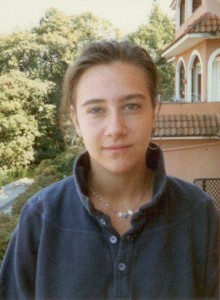This was updated in July of 2013.
Perhaps you have no idea what the above means, but I will explain. You might have heard that the Vatican asked the LCWR (Leadership Conference of Women Religious) to reform themselves by producing a new set of statues, under the guidance of Archbishop Sartain.
Before going any further, let me point out that the average age of LCWR sisters in 2009 was 74.
In 1992, a number of women’s religious communities decided to leave the LCWR and start their own group: the CMSWR or Council of Major Superiors of Women Religious (CMSWR), which was approved by the Vatican in 1995. Some will try to portray the CMSWR as “Vatican created,” but it really came from some communities basically saying that things are rather hippy-dippy with the LCWR and we want out. The LCWR represents 292 communities and CMSWR 90 (probably more now). So, it was not a negligible number of communities that thought the LCWR did not represent them.
Among CMSWR communities, there are such high profile ones as the Dominican Sisters of St. Cecilia, with an average age of 36 (probably lower now). The Dominican Sisters of Mary Mother of the Eucharist, founded in 1997, is growing quite rapidly, now numbering around 100.
As I mentioned earlier, a 2009 survey found the average median age of a women in perpetual vows in a LCWR community to be 74, while the average median age in CMSWR is 60 (NRVC CARA survey PDF). So, there are still a number of CMSWR communities that do not have many vocations, if any. However, it is safe to say that LCWR communities have very, very few vocations (the 2009 survey found less than 1% under age 40 in perpetual vows, while 8% under 40 for CMSWR). The vocations that LCWR communities are getting tend to enter after age 40.
Now with the average age of women in LCWR communities to be 74 in 2009 (perhaps 76 or 77 now?), it seems a bit late in the game to ask for reform. The lack of interest from the young toward such communities has multiple reasons, but one of the major ones is a huge generation gap. Even I struggle to understand young men in formation born in 1989 or 1990, and I’m 43. I entered religious life in 1995, so I don’t have a lot of common cultural reference points.
It seems that a recent article in America has used some statistics that appear to show that LCWR and CMSWR communities had about equal numbers of postulants, novices, and temporary professed according to the 2009 CARA survey, and thus things were somewhat equal in terms of vocations. However, the LCWR represents over 3 times as many communities as the CMSWR. This is definitely not a fair use of stats. The article wants to be “devoid of distortions.” I am not convinced.
Another thing that the article points out is: “The vast majority of both L.C.W.R. and C.M.S.W.R. institutes do not have large numbers of new entrants.” This is true, but of the few that do have large numbers, it should be noted that they are all CMSWR communities. It may be “unfair” to put the media spotlight on them, but having lots of vocations attracts attention, does it not? This seems to be part of a “writing off” of the more successful communities. The few “Nuns on the Bus” get lots of media but the rapidly growing CMSWR communities are, well, shall we say “unfaithful to the narrative,” and thus not worthy of much media attention.
Some have said the the CARA study gave the wrong impression. A National Catholic Reporter article says there is a “slight tilting in the direction of traditional groups” (CARA Study Given Wrong Twist). But traditional groups are genuinely doing better, and a few much better. The return of women’s religious vocations is happening, but it is, for the most part, gradual.
I would like to point out that, of the women that I have seen join religious communities within the past 15 years, most of them have joined communities that started in the 20th century, and all of the communities wear habits (which would generally put them in the “traditional” category). Ironically, many of them started in the last half of the 20th century, so they are “new” in time but to many older communities they haven’t gotten with the “times” (the “times” are already a generation ago, though). Here are communities that women I know personally have joined:
Disciples of the Lord Jesus Christ, Prayer Town, TX
Franciscan Sisters of the Renewal, Bronx, NY
Servants of the Lord and the Virgin of Matara, founded in Argentina
Nashville Dominicans (St. Cecilia)
Missionaries of Charity
Franciscan Sisters T.O.R. of Penance of the Sorrowful Mother, Toronto, OH
Sisters of Life, New York, NY
Discalced Carmelite Nuns, Lake Elmo, MN
Five out of these eight communities started after Vatican II. There is indeed a future to religious life, but it belongs to the youth and the communities they are presently in.
In the end, the communities that are doing the will of God (and that God wants to continue) will survive. Divine Providence has the last say.
(I also comment further on this in a more recent post.)

